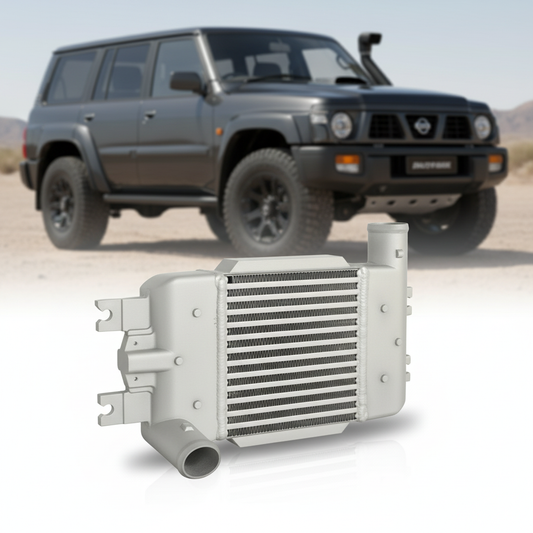An airbag, as the name suggests, is a safety feature. When a vehicle crashes, it rapidly inflates to cushion the driver and passengers, reducing the impact of the collision on the body.
But how does it do all this? Well, behind the scenes, there’s a series of components working together:
-
Sensor Assembly: This is the brain of the system. It detects the force of the collision. Once the collision force is high enough to trigger the airbags, the sensor sends a signal.
-
Inflator: Think of it as the “air pump” for the airbag. It fills the airbag with gas to make it inflate quickly.
-
Airbag: The actual “cushion” that inflates and provides protection for the passengers.
-
Igniter: The igniter is the “spark” that lights the gas generator to power the inflator.
-
Solid-State Nitrogen: This is the secret weapon in the gas generator, quickly releasing gas to inflate the airbag.
-
Warning Light: This little light is your signal to check the system. If it lights up, there might be an issue with the airbag system.

2. Common Issues with Airbag Systems: Have You Experienced Any?
Now that we know how these components work, let’s talk about what could go wrong. Airbags are reliable, but they don’t always work perfectly. When things go wrong, you might notice a few warning signs like:
Sensor Assembly Failure
You’re driving along and suddenly the airbag warning light comes on. Is there a problem with your car? It could be the sensor assembly. The sensor is responsible for detecting collisions, and if it fails, the airbags won’t deploy as expected.
Inflator Issues
If you notice that the airbag doesn’t inflate fully or inflates very slowly, it could be an issue with the inflator. The inflator needs to work quickly and efficiently to ensure the airbag inflates in time.
Airbag Deployment Failure
What if there’s a collision and the airbag doesn’t deploy? This could be a sign that there’s an issue with the control unit or the sensor that prevents the airbag from inflating in time.
Igniter Failure
The igniter is responsible for igniting the gas generator to inflate the airbag. If it fails, the airbag won’t inflate in time, which could reduce the protection offered during a crash.
Solid-State Nitrogen Failure
If the nitrogen fails or leaks, the airbag will inflate slowly, which means it won’t provide adequate protection during a crash.
3. How to Solve These Problems?
While these issues might sound a bit scary, don’t worry, they’re usually fixable. The key is identifying the problem early and addressing it. Here’s how to deal with common issues:
-
Sensor Issues: Start by checking if the sensor is loose or if the wiring is damaged. You can use diagnostic tools to check if the sensor is working properly.
-
Inflator Issues: If the inflator is faulty, it’s best to replace it. After all, safety is the top priority.
-
Airbag Deployment Failure: If the airbag doesn’t deploy, use diagnostic tools to check the system. You may need to replace faulty components.

-
Igniter Issues: Check the igniter circuit for loose connections or damage. Again, diagnostics tools can help you pinpoint the issue.
-
Nitrogen Issues: If the nitrogen leaks or fails, you might need to replace the entire gas generator.
4. Installation Tips for the Airbag System: Be Careful!
Installing or repairing an airbag system isn’t a DIY project for most people. It’s critical to ensure everything is done right. Here are some key things to remember:
-
Correct Sensor Placement: Sensors need to be installed in the right locations to detect collisions accurately.
-
Inflator and Airbag Connection: Make sure the connections between the inflator and the airbag are secure to ensure the airbag inflates properly.
-
Igniter Circuit: Be sure the circuit is correctly wired—if not, the igniter won’t work.
-
Avoid Electrical Interference: Don’t let the airbag system interfere with other electrical systems in your vehicle.
5. How to Identify the Quality of These Components?
Knowing how to identify quality components is essential when dealing with airbags. By following a few simple steps, you can make sure the parts you’re buying are up to the task of protecting you in an accident.
-
Sensor Assembly: To check the sensor’s quality, visually inspect it for cracks or damage. A high-quality sensor should respond quickly and accurately to collisions. If you have a diagnostic tool, you can also test the sensor’s performance.
-
Inflator: The inflator’s job is critical—it needs to inflate the airbag quickly. A well-made inflator will have fine craftsmanship, a compact design, and consistent inflation speed. If you have the right tools, you can test its ability to inflate the airbag within milliseconds.
-
Airbag: Look at the fabric of the airbag. High-quality airbags are made of strong materials like nylon or polyester that are durable and smooth to the touch. If the material feels flimsy or brittle, it’s probably a low-quality airbag that won’t protect you well.
-
Igniter: Check the igniter to ensure the circuit is firm and undamaged. A quality igniter should have better durability and stability, ensuring the airbag inflates at the right time.

-
Solid-State Nitrogen: Nitrogen is a crucial component that affects how fast the airbag inflates. Make sure the gas generator is certified and comes with a detailed technical specification. Low-quality nitrogen generators might cause slow inflation, which could jeopardize safety.
Conclusion: Airbags—Your Car’s Guardian Angel
The airbag system in your car is truly a “guardian angel” for your safety. When everything is working properly, it provides vital protection in case of a crash. But for it to function well, it’s important to pay attention to its components, keep an eye out for warning signs, and fix any issues promptly.
Most importantly, when buying or replacing parts, choose quality components. Whether it’s the sensor, inflator, or airbag itself, always opt for reliable brands and well-made products to ensure your airbag system performs when you need it the most. Stay safe out there!







